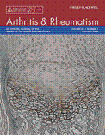Systems biology analysis of sjögren's syndrome and mucosa-associated lymphoid tissue lymphoma in parotid glands
Abstract
Objective
To identify key target genes and activated signaling pathways associated with the pathogenesis of Sjögren's syndrome (SS) by conducting a systems analysis of parotid glands manifesting primary SS or primary SS/mucosa-associated lymphoid tissue (MALT) lymphoma phenotypes.
Methods
A systems biology approach was used to analyze parotid gland tissue samples obtained from patients with primary SS, patients with primary SS/MALT lymphoma, and subjects without primary SS (non–primary SS controls). The tissue samples were assessed concurrently by gene-expression microarray profiling and proteomics analysis, followed by weighted gene-coexpression network analysis.
Results
Gene-coexpression modules related to primary SS and primary SS/MALT lymphoma were significantly enriched with genes known to be involved in the immune/defense response, apoptosis, cell signaling, gene regulation, and oxidative stress. Detailed functional pathway analyses indicated that primary SS–associated modules were enriched with genes involved in proteasome degradation, apoptosis, signal peptides of the class I major histocompatibility complex (MHC), complement activation, cell growth and death, and integrin-mediated cell adhesion, while primary SS/MALT lymphoma–associated modules were enriched with genes involved in translation, ribosome biogenesis and assembly, proteasome degradation, class I MHC signal peptides, the G13 signaling pathway, complement activation, and integrin-mediated cell adhesion. Combined analyses of gene expression and proteomics data implicated 6 highly connected “hub” genes for distinguishing primary SS from non–primary SS, and 8 hub genes for distinguishing primary SS/MALT lymphoma from primary SS.
Conclusion
Systems biology analyses of the parotid glands from patients with primary SS and those with primary SS/MALT lymphoma revealed pathways and molecular targets associated with disease pathogenesis. The identified gene modules/pathways provide further insights into the molecular mechanisms of primary SS and primary SS/MALT lymphoma. The identified disease-hub genes represent promising targets for therapeutic intervention, diagnosis, and prognosis.




